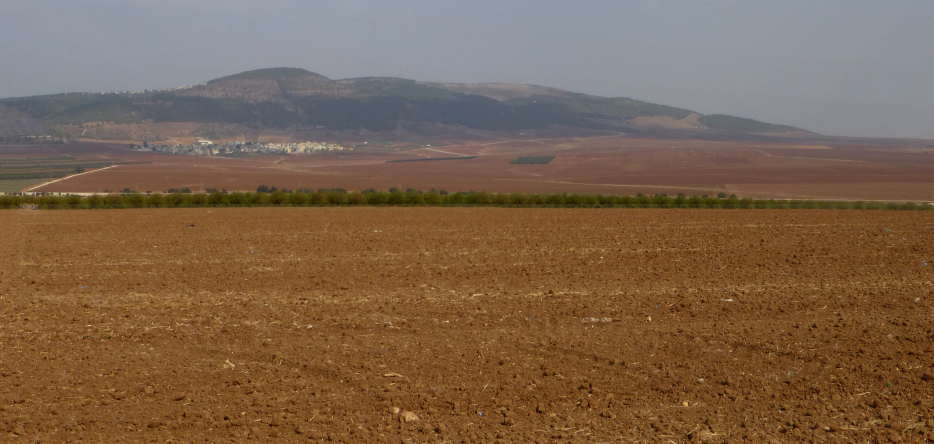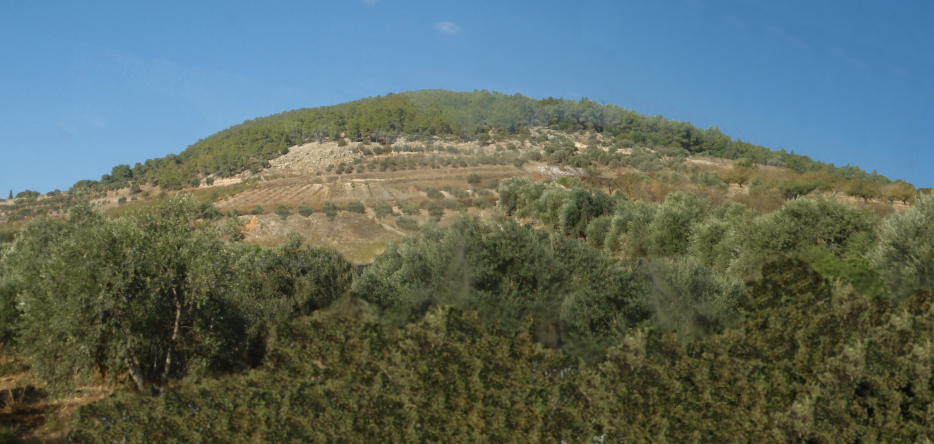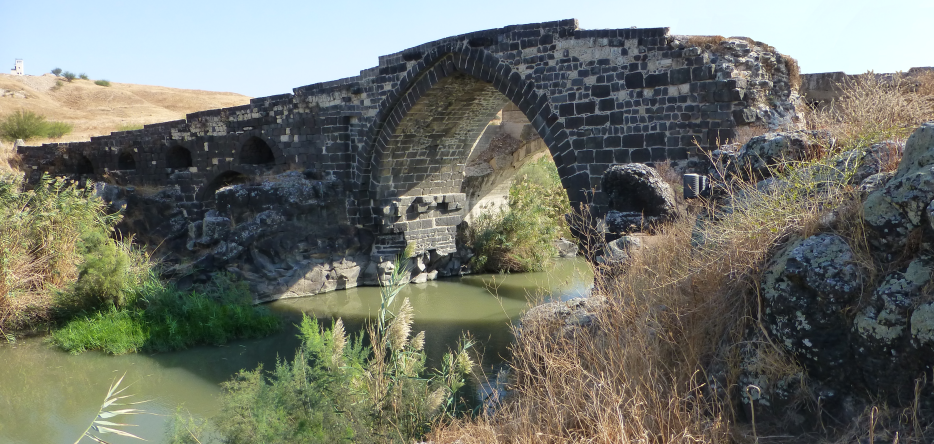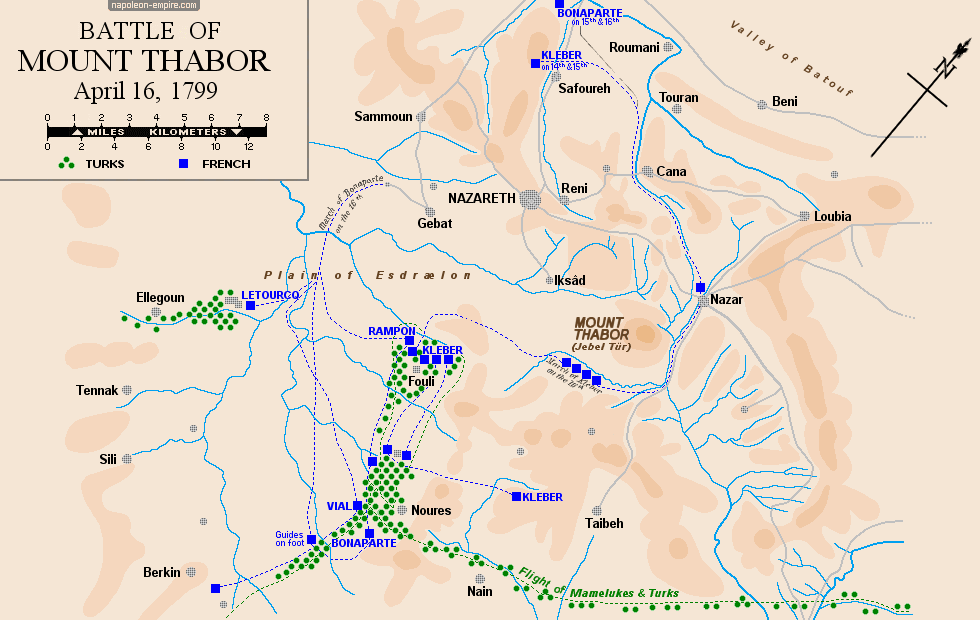Date and place
- April 16, 1799 around Fouli [now Afula, Israel], at the foot of Mount Tabor in Galilea.
Involved forces
- French army (4,000 to 5,000 men according to sources) under the command of General Napoleon Bonaparte.
- Ottoman army (25,000 to 35,000 soldiers according to sources) under the command of Abdullah Pasha al Azm.
Casualties and losses
- French army: 2 dead, 60 wounded.
- Ottoman army: 2,000 dead or wounded, 500 prisoners.
The Battle of Mount Tabor was a consequence of the siege of Saint-Jean-d'Acre [Akko] [32.91972, 35.06927], a port in Galilea on the Mediterranean Sea, by the french "Army of the East".
The situation
At the beginning of 1799, Napoleon Bonaparte entered Syria [now the state of Israel] to meet the troops the Turks were sending to rescue Egypt.
At first, he advanced northwards with characteristic speed. But the stronghold of Saint-Jean d'Acre stopped him in his tracks. He could not leave behind him that heavily fortified city with a strategically important port . It was mid-March.

The siege dragged on. Thanks to the help brought in by the English, the town was growing stronger by the day, while the French army was short of artillery and ammunition, and plagued by disease.
The enemy took advantage of this situation to gather large forces around Damascus [ﺪﻤﺸﻗ], under the leadership of Abdullah (Abdullah Pasha al-Azm - ﻊﺑﺩ ﺎﻠﻠﻫ ﺏﺎﺷﺍ ﺎﻠﻌﻈﻣ), Pasha of Damascus. On April 4, he crossed the Jordan River , posing a major threat to the rear of the Army of the East. Bonaparte had to react.
Preliminary operations
Jean-Andoche Junot, with a detachment of four to five hundred men, was sent to reconnoiter in the direction of Nazareth . On April 8, 1799 (Germinal 19, An VII), he found himself beset by a corps of three to four thousand Mameluke and Turkoman cavalrymen, whom he met with magnificent skill [this battle, known as the Battle of Nazareth, was illustrated by Antoine-Jean Gros in 1801 ]. Having repulsed them, Junot withdrew to a village at the foot of Mount Tabor .
The next day, on having heared of the battle, Napoleon Bonaparte sent General Jean-Baptiste Kléber and the remaining three thousand men of the vanguard to join Junot. On April 14th (Germinal 25th, An VII), after having informed Napoleon, Kléber set out on the march with the intention of attacking the Turks during the night of the 15th to the 16th. His plan was to enter the opposing camp at around two o'clock in the morning, after making progress under cover of darkness.
Napoleon chose to take advantage of this operation to win a decisive battle. He understood that Abdullah intended to offer the French only limited engagements, which would gradually exhaust them and divide their forces. To avoid this peril, he needed a general confrontation, which would be more favorable to French arms.
He therefore left the divisions of generals Jean-Louis-Ébénézer Reynier and Jean Lannes in front of Acre, and left on the 15th (Germinal 26, An VII) with the division of Louis André Bon and some artillery to join Kléber.
At the same time, he sent Joachim Murat with 1,000 men and a cavalry regiment to the Turks' rear, with the mission of blocking one of their retreat routes and joining Kléber as quickly as possible. The latter was about to find himself up against an enemy vastly superior in numbers.
The battle
Kléber's situation was worse than expected. His soldiers had lost their way during the night and only reached their objective at daybreak. The expected element of surprise failed to materialize, as Abdullah had been warned of the arrival of French troops early enough to saddle up his horsemen.
Faced with an enemy with a considerable numerical advantage (twenty-five thousand men against three thousand), the French troops formed two squares and supported themselves on a few ruins where their ambulance set up. Despite thirst and lack of ammunition, Kléber's soldiers held out against the Turkish cavalry for most of the day. Their point-blank fire caused considerable casualties, to the extent that a veritable rampart of dead enemy formed around the French squares.

After six long hours of fighting, with their losses considerable, their ammunition depleted and the prospect of disaster looming, Kléber's army saw Napoleon Bonaparte emerge from Mont Tabor . With him came the three thousand men of General Bon's division.

Divided into two columns also organized in squares, they and Kléber's troops formed the three corners of an equilateral triangle, with the enemy at its center. In addition, several regiments were detached, some to channel the Turks' retreat, others to wait for them where they would have been pushed and shoot them as they fled.
Taken from behind and in flank, cut off from their camp located several leagues from the battlefield, and placed under the crossfire of Kléber's and Bonaparte's troops, the Turkish cavalry was massacred. A rare event in military history, for once the infantry charged the cavalry with the bayonet!
Abdullah's infantrymen abandoned the battle, leaving six thousand dead on the field and their leader in enemy hands. Many of the fugitives drowned a little later as they attempted to ford the Jordan , Murat having seized, in accordance with his instructions, the Daughters of Jacob bridge [destroyed in 1948] they had intended to cross. Others managed to escape via the Medjameh bridge [32.62458, 35.56461], south of Lake Tiberias .

Consequences
Saint-Jean-d'Acre could no longer hope for help. However, the city continued to resist until the French lifted the siege and returned to Egypt [ﻢﺻﺭ].
After this defeat, the Sublime Porte will not be able to oppose the French invaders with a new army for another three months. This will be the Battle of Abukir.
Map of the battle of Mount Tabor

Picture - "Battle of Mount Tabor". Painted 1837 by Leon Cogniet and Henri-Felix-Emmanuel Philippoteaux.

Amédée Duquesnel wrote an epic poem about the Battle of Mount-Tabor. Download it (in French) (epub format)
Photos Credits
Photos by Lionel A. Bouchon.Photos by Marie-Albe Grau.
Photos by Floriane Grau.
Photos by Michèle Grau-Ghelardi.
Photos by Didier Grau.
Photos made by people outside the Napoleon & Empire association.